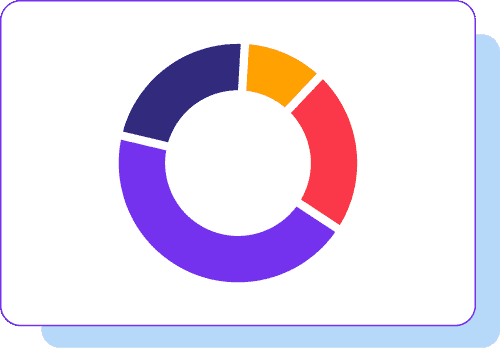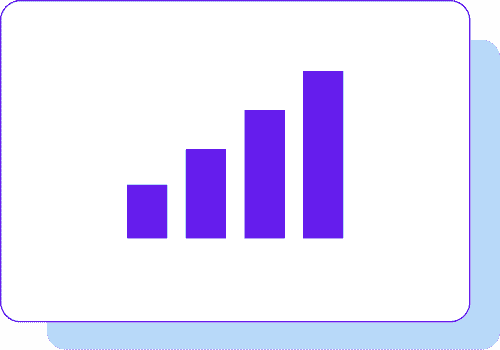Greetings readers! In today’s digital age, content marketing has evolved into an indispensable tool across various industries. This dynamic approach not only enhances brand visibility but also fosters meaningful connections with potential clients, partners, and stakeholders. Join me on a journey through the world of content marketing, where we’ll explore key strategies and insights applicable to diverse sectors.

Understanding Your Audience
Success in content marketing begins with a deep understanding of your audience. Let’s delve into the significance of defining your audience, identifying ideal customers, and employing effective audience segmentation strategies.
The Significance Of Defining Your Audience
Before crafting compelling content, it’s imperative to know your audience. This involves identifying key stakeholders in your industry, such as procurement managers, engineers, or end-users, and tailoring your messaging to resonate with their unique needs.
Table 2: Tailoring Messaging Strategies
| Strategy | Pros | Cons |
|---|---|---|
| Identify key pain points | – Connects emotionally | – Limited to known pain points |
| Segment based on roles | – More personalised messaging | – Requires continuous updates |
| Utilise surveys and feedback | – Real-time insights | – Participation may be low |
Identifying Your Ideal Customers & Their Needs
Engaging in market research, conducting surveys, and exploring the industry ecosystem are crucial steps to identify the best-fit customers for your products or services. This insight allows for content creation that directly addresses customer concerns and aspirations.
Table 3: Market Research Strategies
| Strategy | Pros | Cons |
|---|---|---|
| Conducting customer surveys | – Direct feedback | – Limited to survey participants |
| Analysing competitor strategies | – Identifies market gaps | – May not capture customer nuances |
| Engaging with industry forums | – Real-time industry insights | – Potential for biased opinions |
Effective Audience Segmentation Strategies
Audience segmentation involves breaking down your target audience into distinct groups based on shared characteristics. This section explores segmentation criteria such as industry sectors, company size, job roles, location, and purchase intent.
Table 4: Industry Sectors Segmentation
| Segment | Pros | Cons |
|---|---|---|
| Segmenting based on industry sectors | – Tailored content for specific needs | – Ignores individual variations |
| Tailoring content for job roles | – Precision in addressing concerns | – Limited coverage across industries |
| Location-based targeting | – Localised relevance | – May miss broader industry trends |
Creating Valuable Content
Understanding your audience sets the stage for creating valuable content. This section emphasises the significance of premium and relevant content, explores effective content types, and provides guidance on maintaining a consistent content production schedule.
The Significance Of Premium & Relevant Content
In a digital landscape saturated with information, producing standout content is crucial. High-quality content not only showcases expertise but also builds trust.
Table 5: Characteristics of Premium Content
| Characteristic | Benefits |
|---|---|
| In-depth insights | – Establishes authority |
| Engaging storytelling | – Captivates the audience |
| Solution-oriented | – Builds trust and credibility |

Content Types That Work
The manufacturing industry offers various opportunities to get creative with content. Consider these effective content types:
Table 6: Effective Content Types
| Content Type | Usage |
|---|---|
| Blog Posts | – Industry trends |
| Videos | – Product showcases |
| Infographics | – Simplifying complex data |
| Case Studies | – Success stories |
| Whitepapers and Ebooks | – In-depth industry topics |
| Webinars and Podcasts | – Industry discussions |
Maintaining A Content Production Schedule
Consistency is key in content marketing. To keep your audience engaged, follow these tips:
Table 7: Tips for Consistent Content Production
| Strategy | Implementation |
|---|---|
| Create an Editorial Calendar | – Plan content in advance |
| Stick to a Routine | – Set a consistent publishing schedule |
| Repurpose Content | – Transform content into different formats |
| Delegate Tasks | – Involve a team for workload distribution |
| Engage with Your Audience | – Respond to comments and feedback |
Leveraging SEO For Visibility
In our digital age, search engine optimisation (SEO) plays a pivotal role in the success of content marketing. For businesses across industries, mastering the art of SEO can be a game-changer.
The Power Of SEO In Content Marketing
Imagine your content as a beacon in the vast sea of the internet. SEO acts as a guiding light, helping your target audience find your content amidst the online noise.
Table 8: Benefits of SEO in Content Marketing
| Benefit | Description |
|---|---|
| Increased Visibility | – Higher rankings on search engines |
| Targeted Traffic | – Attracts relevant audience |
| Credibility and Trust | – Appears in authoritative search results |
Optimising Content For Industry-Specific Keywords
Keyword research, local SEO, long-tail keywords, and natural integration are crucial aspects of optimising content for search engines.
Table 9: Strategies for Optimising Content
| Strategy | Implementation |
|---|---|
| Keyword Research | – Identify relevant industry keywords |
| Local SEO | – Incorporate location-based keywords |
| Long-Tail Keywords | – Use specific and tailored phrases |
| Natural Integration | – Seamlessly incorporate keywords |
On-Page And Off-Page SEO Techniques
On-page SEO involves optimising titles, creating quality content, crafting appealing meta descriptions, and optimising images and URLs. Off-page SEO focuses on cultivating backlinks, engaging on social media, and encouraging positive online reviews.
Table 10: On-Page and Off-Page SEO Techniques
| Technique | Description |
|---|---|
| On-Page SEO | – Optimise titles, content, meta descriptions, images, and URLs |
| Off-Page SEO | – Build backlinks, engage on social media, encourage positive reviews |
Promoting Your Content
Creating outstanding content is only the first step; to make it truly effective, you need to promote it effectively. This section explores various channels for content promotion, offering advice on building a content distribution strategy and the importance of paid advertising and influencer marketing.

Diverse Channels For Content Promotion
Table 11: Content Promotion Channels
| Channel | Usage |
|---|---|
| Social Media | – Share content on platforms like Facebook, Twitter, LinkedIn, and Instagram |
| Email Marketing | – Directly reach subscribers’ inboxes |
| Industry-Specific Platforms | – Join forums and platforms relevant to the industry |
| Collaboration | – Partner with other businesses for cross-promotion |
Building A Content Distribution Strategy
Set objectives, segment your audience, create an editorial calendar, amplify your best content, leverage user-generated content, and delegate tasks for effective content distribution.
Table 12: Content Distribution Strategy
| Strategy | Implementation |
|---|---|
| Set Objectives | – Define content marketing goals |
| Segment Your Audience | – Tailor distribution to different audience segments |
| Content Calendar | – Plan content publishing schedule |
| Amplify Your Best Content | – Promote high-performing content |
| User-Generated Content | – Encourage audience contributions |
| Delegate Tasks | – Involve team members for efficiency |
The Power Of Paid Advertising And Influencer Marketing
Investing in paid advertising and collaborating with influencers can significantly boost your content’s reach and impact.
Table 13: Paid Advertising vs. Influencer Marketing
| Aspect | Paid Advertising | Influencer Marketing |
|---|---|---|
| Reach | – Broad audience reach | – Targeted reach through influencer’s followers |
| Credibility | – Builds brand credibility | – Leverages influencer’s credibility |
| Cost | – Cost varies based on platform and ad type | – Influencer fees and negotiations |
Measuring Success: Analytics And Key Performance Indicators
The success of your content marketing efforts relies on accurate measurement and analysis. This section explores essential analytics tools and key performance indicators (KPIs) to gauge the effectiveness of your content strategy.
Essential Analytics Tools
Table 14: Analytics Tools for Content Marketing
| Tool | Features |
|---|---|
| Google Analytics | – Web traffic analysis |
| Social Media Insights | – Platform-specific metrics |
| SEO Analytics | – Keyword performance, backlink tracking |
| Email Marketing Analytics | – Open rates, click-through rates |
Key Performance Indicators (KPIs)
Determine the success of your content marketing efforts by tracking key performance indicators such as website traffic, engagement, conversion rates, and customer retention.
Table 15: Key Performance Indicators (KPIs)
| KPI | Measurement |
|---|---|
| Website Traffic | – Page views, unique visitors |
| Engagement | – Likes, shares, comments |
| Conversion Rates | – Leads, sales |
| Customer Retention | – Repeat business, loyalty |
Evolving Trends And Future Outlook
As we conclude our comprehensive guide to content marketing, let’s explore emerging trends and the future outlook of this dynamic field. Staying ahead of the curve is essential for continued success in content marketing.
Emerging Trends
Table 16: Emerging Trends in Content Marketing
| Trend | Description |
|---|---|
| Interactive Content | – Engage audiences through quizzes, polls, and interactive experiences |
| Video Dominance | – Increasing focus on video content |
| Artificial Intelligence (AI) in Content | – Utilise AI for content creation, personalisation, and analysis |
| Voice Search Optimisation | – Optimise content for voice search |
Future Outlook
Table 17: Future Outlook of Content Marketing
| Aspect | Prediction |
|---|---|
| Personalised Content | – Increasing focus on tailored content for specific audience segments |
| Integration of AR and VR | – Augmented and virtual reality becoming integral to content experiences |
| Enhanced Data Privacy | – Stricter regulations and heightened focus on user data privacy |
Conclusion
Embarking on a successful content marketing journey requires dedication, adaptability, and a keen understanding of your audience. By integrating these strategies and staying attuned to industry trends, you’ll be well-positioned to create impactful content that resonates with your target audience. Remember, content marketing is an ever-evolving landscape, so stay curious, stay creative, and enjoy the journey of mastering content marketing across diverse industries. Happy content crafting!















